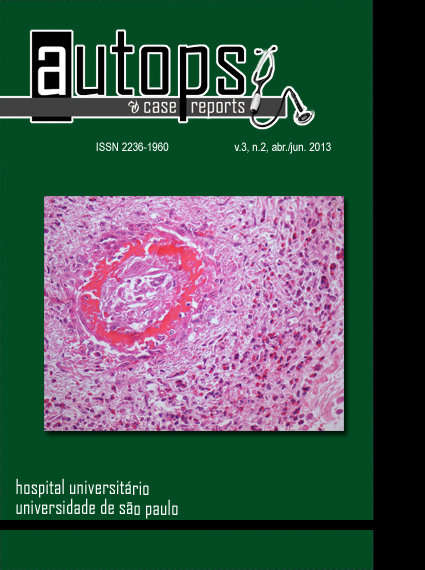Parasitic myoma after supracervical laparoscopic histerectomy
DOI:
https://doi.org/10.4322/acr.%25y.58914Keywords:
Laparoscopy, Myoma, Histerectomy, Laparoscopy/adverse effects, Laparoscopy/ methods, Leiomyoma/surgery.Abstract
Parasitic myoma is a condition defined as a myoma of extrauterine nourishing. It may occur spontaneously or as a consequence of surgical iatrogeny, after myomectomy or videolaparoscopic supracervical hysterectomy, due to remaining residues of uterine tissue fragments in the pelvic cavity after morcellation. The authors describe two cases in which the patients were submitted to videolaparoscopic supracervical hysterectomy and uterine body removal through morcellation. The sites of development of the parasitic myomas were next to the cervix stump in Case 1, and next to the right round ligament in Case 2. These parasitic myomas were removed by videolaparoscopy. After myomectomies or videolaparoscopic supracervical hysterectomies followed by uterine fragments removal from the pelvic cavity through morcellation, meticulous searching for residues or fragments of uterine tissue is mandatory to prevent the occurrence of parasitic myomas.Downloads
Download data is not yet available.
Downloads
Published
2013-06-25
Issue
Section
Article / Clinical Case Report
License
Copyright
Authors of articles published by Autopsy and Case Report retain the copyright of their work without restrictions, licensing it under the Creative Commons Attribution License - CC-BY, which allows articles to be re-used and re-distributed without restriction, as long as the original work is correctly cited.
How to Cite
Mieli, M. P. A., Grell, A. M. S. M., Simões, R. dos S., & Mattos, L. A. de. (2013). Parasitic myoma after supracervical laparoscopic histerectomy. Autopsy and Case Reports, 3(2), 45-49. https://doi.org/10.4322/acr.%y.58914



